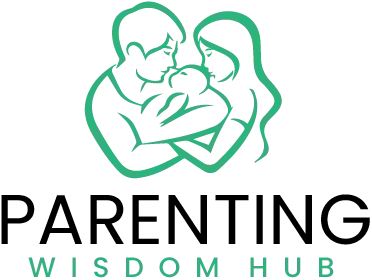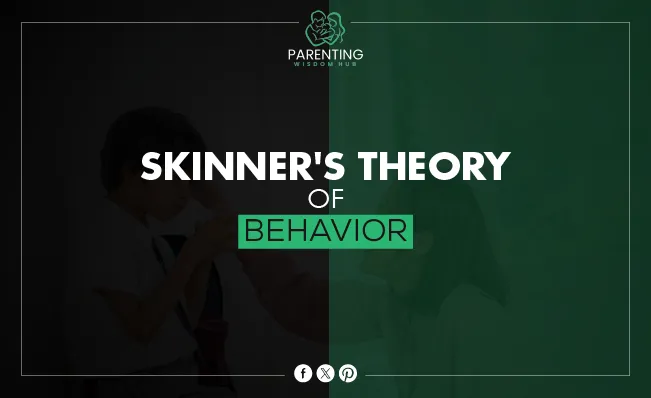Introduction
B.F. Skinner is one of the most famous names in the field of psychology. Skinner changed the way we think about human behavior and learning. He is renowned for being one of the first people to study behaviorism. By carefully conducting tests and coming up with new ideas, he built Skinner’s theory of behavior, which still affects the field of psychology today.
This blog has two goals: first, to give an in-depth explanation of Skinner’s Theory of Behavior, focusing on its main ideas and principles; and second, to look at the many ways that his theory can be used in different areas, showing how relevant it is to modern psychology and beyond.
Who Was B.F. Skinner?
Background and Biography
B.F. Skinner, an American psychologist, was born Burrhus Frederic Skinner in 1904. He is known for his work in behaviorism. Skinner was raised in a small town in Pennsylvania. His upbringing made him interested in the world and learning how people act.
Early Life and Education
Skinner’s academic journey started at Hamilton College, where he first studied English literature for a degree. However, his interests quickly changed to psychology, which led him to go to Harvard University for graduate school. With the help of famous scientist William James, Skinner studied behavior in depth, which set the stage for his future career.
Key Influences in His Career
The early works of behaviorists like Ivan Pavlov and John B. Watson greatly impacted Skinner’s academic growth. Their focus on behavior that can be seen and the things in the environment that affect it struck a chord with Skinner, and it made him want to learn more about these ideas in his studies.
Major Contributions to Psychology
Operant Conditioning:
Definition: One of Skinner’s most important contributions is operant conditioning, a way of learning that uses benefits and punishments to change behavior.
Mechanisms: It uses rewards (positive or negative) to get people to do good things and punishments to stop them from doing bad things.
Skinner Box: Skinner made the operant conditioning box, also known as the Skinner Box, to study animal behavior in a safe place.
Behavior Modification:
Application: Behavior change programs, especially those used in schools and therapy, have used Skinner’s ideas about operant conditioning.
Techniques: Methods like token economies and behavior training are used to get people to improve their behavior.
Schedules of Reinforcement:
Concept: Skinner found that different schedules of reinforcement (fixed-ratio, variable-ratio, fixed-interval, and variable-interval) affect how fast and well an action is learned.
Impact: These schedules help us understand how different reinforcement patterns and rates can affect behaviors learned and lost.
Cumulative Recorder:
Invention: Skinner created the cumulative recorder, a tool that saves answers in a way that lets you see how behavior patterns change over time.
Usage: This tool has been beneficial in behavior analysis because it allows experts to examine how different schedules of reinforcement affect behavior.
Radical Behaviorism:
Philosophy: Skinner supported radical behaviorism, which holds that environmental interactions explain all human behavior without introspection or hypothetical conceptions.
Legacy: Due to this ideology, psychological research and therapy have emphasized empirical methods and observable measurements.
Work and Impact on Behaviorism
Development of the Operant Conditioning Chamber: The Skinner Box allowed Skinner to investigate behavior in a controlled context. It measured reactions and was used to reinforce or punish.
Formulation of the Principles of Reinforcement: According to Skinner, positive and negative reinforcement increases the likelihood of a behavior being repeated. Negative reinforcement removes an aversive sensation, while positive reinforcement presents a gratifying stimulus.
Introduction of Punishment and Its Effects: According to Skinner, punishment reduces behavior recurrence. He separated positive (adding an unfavorable consequence) and negative (removing a favorable outcome) punishment.
Schedules of Reinforcement: Skinner’s study produced fixed-ratio, variable-ratio, fixed-interval, and variable-interval reinforcement schedules, each creating diverse behavior patterns.
Application to Education and Learning: Skinner’s theories helped develop educational approaches, including reinforcement to encourage desired student actions and programmed instruction.
Influence on Behavioral Therapy: Skinner emphasized conditioning in behavior change, laying the framework for professional behavior modification approaches for psychological problems.
Criticisms and Controversies: Despite his accomplishments, Skinner was criticized for his mechanistic perspective of human behavior and the ethical implications of his studies, spawning controversies in modern psychology.
Most Notable Theories and Experiments
Operant Conditioning: Skinner believed that reinforcements or punishments affect behavior. Positive reinforcement reinforces behavior by offering a positive consequence, while negative reinforcement removes an unpleasant stimulus. However, punishment diminishes conduct.
The Skinner Box (Operant Conditioning Chamber): Skinner created an operant conditioning lab. When a rat or pigeon presses a lever or button in the box, it receives food, encouraging the behavior.
Schedules of Reinforcement: Skinner identified fixed-ratio, variable-ratio, fixed-interval, and variable-interval favorable reinforcer schedules. Schedules produce different patterns and reaction rates.
Cumulative Recorder: Skinner devised a visual recording apparatus to track subject reactions over time. This device showed behavioral patterns and rates, making reinforcement schedule analysis easier.
Behavior Shaping: Skinner showed that complicated behaviors might be taught by reinforcing closer approximations of the desired behavior, a method widely employed in animal training and behavioral therapy.
Superstition in Pigeons: Skinner’s pigeon studies showed that non-contingent reinforcement might cause superstition, revealing human and animal learning mechanisms.
The Basics of Skinner’s Theory of Behavior
Behaviorism studies behavior rather than mental processes. John B. Watson and B.F. Skinner founded it. Behaviorism holds that environmental interactions teach behavior.
Core Principles
Observable Behavior: It focuses on studying behavior that can be seen and measured instead of mental states that can’t be seen or measured.
Environment Interaction: Suggests that people learn how to behave by interacting with their surroundings.
Reinforcement and Punishment: It argues that positive and negative reinforcement and penalties are essential for learning and changing behavior.
Stimulus-Response Relationships: Specifies the connection between outside factors and the reactions they cause.
Empirical Methods: It stresses the importance of using scientific and empirical methods to study behavior and relying on facts that can be measured and seen.
Behavior Modification: It applies conditioning concepts to change destructive behaviors and promote good ones.
Role of Consequences: Emphasizes that the results of behavior (reinforcement or punishment) significantly affect how likely it is to happen again.
Introduction to Operant Conditioning
One way people learn is through operant conditioning, in which the results of an action make it stronger or weaker. Operant conditioning is different from classical conditioning because it looks at the results of behavior instead of the cues.
Difference between Operant and Classical Conditioning
Behavior: The idea behind operant conditioning is that behavior results from what happens after it. Animals and plants have voluntary actions that are affected by the results they get.
Reinforcement: This is when stimuli are used to make an action more likely to happen again. Positive reinforcers add a pleasant stimulus, while negative reinforcers remove an unpleasant one.
Punishment: This is meant to make an action less likely to happen. Punishments can be positive (adding something terrible) or negative (removing something good).
Reinforcement Schedules: Skinner introduced fixed-ratio, variable-ratio, fixed-interval, and variable-interval reinforcement schedules.
Extinction: This happens when a behavior that was once rewarded is no longer rewarded, which makes the behavior less likely to occur over time.
Shaping: Complex behaviors can be learned over time by rewarding smaller and smaller steps toward the desired behavior.
Discriminative Stimuli: Signals or cues that show praise or punishment will happen after a specific behavior. They help living things figure out when to reward or punish certain behaviors.
Key Concepts in Skinner’s Theory
Several basic ideas form the basis of Skinner’s theory of behavior:
Positive Reinforcement: Providing a desired stimulus after a behavior makes it more likely that the behavior will happen again.
Negative Reinforcement: Taking away an unpleasant trigger after a behavior makes it more likely that the behavior will happen again.
Punishment (Positive and Negative): Adding an unpleasant stimulus (positive punishment) or removing a desirable stimulus (negative punishment) after an action makes it less likely to happen again.
Extinction: When reinforcement is removed, a learned action slowly gets weaker and weaker until it disappears.
It is essential to understand these ideas to grasp how operant training shapes and changes behavior fully.
Skinner’s Experiments
The Skinner Box (Operant Conditioning Chamber)
The operant conditioning chamber, or Skinner Box, was crucial to B.F. Skinner’s behaviorism experiments. It was a controlled environment to explore operant training by changing animal behavior’s consequences.
Description and Purpose
Skinner Boxes were miniature enclosures with levers or buttons that animals could press to acquire food or drink. The box’s sensors let researchers track and reward or penalize the animal’s behavior. Skinner studied behavior’s response to varied reinforcement schedules in the Skinner Box.
Findings from Experiments Using the Skinner Box
Skinner used the Skinner Box in many studies, which led to several important conclusions:
- He supported the ideas of operant conditioning by showing that behavior could be changed and maintained by rewarding it.
- Skinner observed that animals would do things that were rewarded, and things that were not rewarded would finally stop happening.
- Skinner looked into how different reinforcement conditions affected behavior by changing reinforcement schedules. This led to the creation of ideas like fixed-ratio and variable-interval schedules.
Schedules of Reinforcement
Skinner’s study on reinforcement schedules showed that when and how often reinforcement happens significantly affects behavior. Here are some of the most essential incentive schedules:
Fixed-Ratio Schedule: After a certain number of answers, reinforcement is given.
Variable-Ratio Schedule: After an unknown number of replies, reinforcement is given.
Fixed-Interval Schedule: After a certain amount of time has passed since the last boost, another one is given.
Variable-Interval Schedule: After an unknown amount of time has passed since the last boost, another one is given.
Impact on Behavior and Learning
Skinner’s tests showed that different schedules of reward lead to other behavior patterns:
- Fixed-ratio schedules produce high response rates as the animal increases its efforts to receive the reinforcement.
- Variable-ratio schedules cause persistent responses because the behavior is rewarded. After all, reinforcement is not always predictable.
- The response rates are more moderate on fixed-interval and variable-interval schedules because the reinforcement time affects how the animal acts.
To understand how behavior is kept and changed in the real world, you need to know about these schedules of reinforcement.
Applications of Skinner’s Theory
Education
Behavior Modification Techniques in Classrooms
Skinner’s Theory of Behavior affects education, especially behavior modification. Teachers can use operant conditioning to modify and reinforce student behavior. Praise and prizes can boost academic performance and participation. However, moderate punishment or loss of privileges can deter disruptive behavior.
Examples of Reinforcement and Punishment in Educational Settings
Classrooms utilize reinforcement and punishment to manage behavior. A teacher may reward pupils who finish their work on time and give them timeouts or zero recess for disruptive behavior. They try to establish a favorable learning atmosphere for academic performance.
Parenting
Practical Applications for Child Behavior Management
Parenting using Skinner’s operant conditioning techniques can help manage children’s behavior. Parents can reinforce chore completion and academic performance with praise or privileges. Punishments like timeouts or privilege loss can curb disobedience and hostility.
Workplaces
Employee Motivation and Performance Management
Skinner’s Theory of Behavior can inform workplace motivation and performance management. To encourage productivity and teamwork, employers can offer bonuses or recognition programs. Adverse penalties like reprimands or job termination can also dissuade tardiness and insubordination.
Therapy and Behavior Modification
Use in Treating Various Psychological Conditions
Skinner’s Theory of Behavior is used in treatment and behavior modification for psychological problems. To encourage positive conduct, therapists employ token economies, where patients earn tokens for good behavior and exchange them for prizes. Systematic desensitization, based on extinction, gradually exposes patients to frightening stimuli to treat phobias and anxiety disorders.
Educators, parents, employers, and therapists can successfully shape and change behavior to promote good outcomes in various settings by applying Skinner’s principles of operant conditioning.
Criticisms and Limitations of Skinner’s Theory
Main Criticisms
Overemphasis on External Behavior over Internal Processes
A significant critique of Skinner’s Theory of Behavior is its restricted focus on observable behavior over internal mental processes. According to critics, behaviorism ignores cognitive processes, including thoughts, emotions, and motivations that affect behavior. Skinner’s theory fails to explain human behavior by focusing primarily on external stimuli and responses.
Ethical Concerns Regarding Control and Manipulation
Moral issues around control and manipulation are another criticism of Skinner’s approach. Critics say reforming behavior with reinforcement and punishment raises ethical questions about autonomy and free will. Controlling behavior using external stimuli is considered oppressive and dehumanizing.
Limitations
Applicability to Complex Human Behaviors
Skinner’s Theory of Behavior illuminates learning and behavior modification but cannot explain complicated human behaviors. Skinner’s behaviorist theory may need to account for cognitive processes, social relationships, and cultural standards that influence human behavior.
Lack of Consideration for Innate and Cognitive Factors
Critics say that Skinner’s approach ignores innate predispositions and cognitive variables influencing behavior. Individuals bring their traits and predispositions to learning, not only environmental stimuli. Information acquisition, processing, and response depend on cognitive functions like memory, attention, and perception.
Despite these criticisms and limitations, Skinner’s Theory of Behavior is a critical psychological framework that illuminates learning and behavior control. One must admit its flaws and consider other viewpoints to comprehend human behavior.
Legacy and Modern Relevance
Influence on Modern Psychology
B.F. Skinner made essential advances to psychology that will never be forgotten. They have changed how we think about behavior and learning deeply. Behaviorism was his groundbreaking field of study, leading to many ideas and methods in psychology that are still used today.
Cognitive-Behavioral Therapy (CBT) and Other Contemporary Practices
Cognitive-behavioral therapy (CBT), which combines behaviorism with cognitive psychology, is one of Skinner’s most important contributions. To improve thought and behavior, CBT uses Skinner’s reinforcement, punishment, and extinction to discover and change maladaptive patterns.
Current Research and Developments
Recent Studies Building on Skinner’s Work
Recently, scholars have expanded Skinner’s operant conditioning concepts and applied them in new ways. Behavioral economics, animal training, and organizational behavior have illuminated behavior and learning mechanisms, strengthening Skinner’s theory.
New Interpretations and Applications of Operant Conditioning
Integration with Technology: Modern technological progress has made combining operant conditioning ideas with technology more accessible. For example, adaptive learning software and apps give users quick feedback and change their learning experiences based on performance.
Enhancements in Behavioral Interventions: A new study has made behavioral interventions more practical for many conditions, such as autism spectrum disorders, using better reinforcement strategies and individualized approaches.
Broader Application Domains: Skinner’s work has gone beyond traditional psychology. It has impacted fields as different as marketing (which uses reinforcement to study buyer behavior) and criminal justice (where behavior modification programs try to lower recidivism).
Interdisciplinary Influence: Many fields have accepted operant conditioning ideas, leading to joint efforts to understand human behavior. For example, neuroscience and other fields have worked together to figure out how reinforcement and punishment are processed in the brain.
Ethical and Practical Considerations: The academic community is engaged in ongoing conversations about ethically applying Skinner’s ideas and ensuring that techniques for changing people’s behavior are used in kind and helpful ways.
Key Takeaways:
Operant Conditioning: Operant conditioning is at the heart of Skinner’s Theory of Behavior, which stresses how outcomes shape behavior. Knowing how rewards and punishments affect behavior in many settings, such as schooling and therapy, is essential.
Behavior Modification: Behavior modification methods can use Skinner’s ideas in the real world. Using rewards and punishments can help shape desired behaviors and stop unwanted ones, whether it’s in the classroom, as a parent, or at work.
Legacy and Influence: Skinner’s work has dramatically affected modern psychology. It led to the development of cognitive-behavioral therapy (CBT) and continues to inspire behaviorism studies. His legacy helps us understand how people act and brings about positive change.
Criticisms and Limitations: Skinner’s theory has some good points but has some problems, like focusing too much on behavior in the outside world and raising moral questions about control. Seeing these flaws helps us understand behaviorism more complexly.
Continued Relevance: Even though it has been criticized, Skinner’s theory is still valid and has led to new developments in psychology. New studies and uses show that his work is still essential for understanding and changing behavior.


